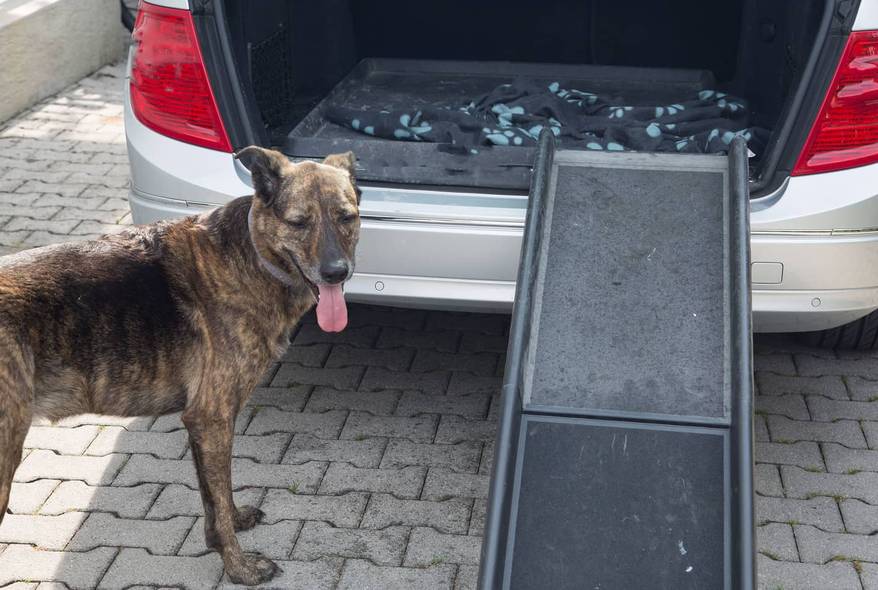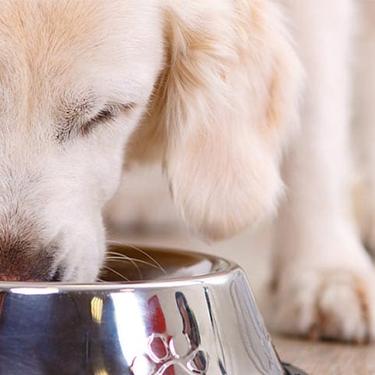
-
Find the right food for your pet
Take this quiz to see which food may be the best for your furry friend.
Find the right food for your pet
Take this quiz to see which food may be the best for your furry friend.
Featured products
 Small & Mini Savory Stew with Chicken & Vegetables Dog Food
Small & Mini Savory Stew with Chicken & Vegetables Dog FoodA delicious complement to the nutrition of Science Diet Small & Mini 7+ dog food
Shop Now Adult 7+ Perfect Digestion Chicken, Whole Oats & Brown Rice Recipe Dog Food
Adult 7+ Perfect Digestion Chicken, Whole Oats & Brown Rice Recipe Dog FoodScience Diet's breakthrough nutrition supports ultimate digestive well-being & healthy microbiome for dogs age 7+
Shop Now Adult Healthy Cuisine Roasted Chicken, Carrots & Spinach Stew Dog Food
Adult Healthy Cuisine Roasted Chicken, Carrots & Spinach Stew Dog FoodDelicious roasted chicken paired with tender vegetables in a succulent stew
Shop NowFeatured products
 Adult Savory Entrée Can Variety Pack Cat Food
Adult Savory Entrée Can Variety Pack Cat FoodPrecisely balanced nutrition with the delicious taste of savory minced chicken to help fuel the energy needs of cats during the prime of their life
Shop Now Adult 7+ Tender Tuna Dinner Cat Food
Adult 7+ Tender Tuna Dinner Cat FoodWith delicious chunks in a decadent gravy
Shop Now Adult 7+ Senior Vitality Chicken & Vegetable Stew Cat Food
Adult 7+ Senior Vitality Chicken & Vegetable Stew Cat FoodImproves Everyday Ability to Get Up & Go
Shop Now -
Dog
- Dog Tips & Articles
-
Health Category
- Weight
- Food & Environmental Sensitivities
- Urinary
- Digestive
- Joint
- Kidney
-
Life Stage
- Puppy Nutrition
- Adult Nutrition
- Senior Nutrition
Cat
- Cat Tips & Articles
-
Health Category
- Weight
- Skin & Food Sensitivities
- Urinary
- Digestive
- Kidney
-
Life Stage
- Kitten Nutrition
- Adult Nutrition
Featured articles
 Does My Pet Hate Me?
Does My Pet Hate Me?Learn tips for bonding with your pet if you've ever thought, 'My dog doesn't like me, or 'Why do I have a standoffish cat?'
Read More Do Dogs and Cats have Belly Buttons?
Do Dogs and Cats have Belly Buttons?Learn whether cats & dogs have belly buttons like humans, what the function is, and if there are any health concerns associated with it.
Read More Why Are Dogs and Cats So Cute?
Why Are Dogs and Cats So Cute?If waggy puppy dog tails and furry kitten yawns make you swoon, you're not alone. Why are cats so cute? And, dogs too! Let's find out!
Read More -


According to the American College of Veterinary Surgeons, osteoarthritis affects up to one quarter of dogs. Unlike arthritis in general, osteoarthritis in dogs refers specifically to the degeneration of cartilage in your pet's joints and is most common in mature and senior dogs. Read on to learn how you can be on the lookout for the signs of arthritis in dogs and how to help your pet if he develops this condition.
How Arthritis Develops
People, especially athletes, are also prone to osteoarthritis following injuries to a cruciate ligament (a structure located in your knees, neck, and fingers). According to the Centers for Disease Control and Prevention, close to half of adults older than 65 experience osteoarthritis. Canine bodies undergo similar changes when they age and their cartilage becomes worn out over time.
Cartilage serves as a shock absorber between bones. If cartilage becomes damaged, the protective cushion is lost and the joints are subjected to abnormal wear and tear. In an attempt to compensate for the weakened area, the body forms new bony projections called osteophytes (bone spurs). Unfortunately, the new bone is not a good substitute for cushioning cartilage and the joint becomes a chronic source of pain.
The hips, elbows and knees are the leading sites of osteoarthritis in dogs. The development of osteoarthritis is usually secondary to the common problem of cranial cruciate ligament disease, explains Colorado State University's Veterinary Teaching Hospital. Deterioration of the ligament with age combined with factors like genetics and obesity contribute to its eventual breakdown.

The Causes of Osteoarthritis in Dogs
Many variables can contribute to the development of arthritis in dogs. Aside from osteoarthritis, dogs can develop joint problems from infectious diseases like systemic lupus erythematosus and Lyme disease. The British Veterinary Association explains that genetic conditions like hip and elbow dysplasia can also put a dog at risk.
Other causes are more preventable. Obesity in pets places undue strain on the joints and often results in premature degenerative disease. Osteoarthritis is just one of the problems associated with overweight dogs, together with heart disease, cancer, and diabetes. Traumatic injuries can occur at any age, and present the risk of inducing lifelong osteoarthritis in dogs. Car accidents are the most common source of bone trauma that results in cartilage damage.
The Signs of Canine Arthritis
The signs of osteoarthritis in dogs are similar to those observed in cats. Since cats are avid climbers and jumpers, pet parents will often notice these behaviors diminishing as osteoarthritis progresses. For dogs, arthritis may present as "slowing down" or general stiffness. Take your dog to the veterinarian if he starts to show any of the following signs:
- Lameness
- Stiffness when getting up from resting
- Reluctance to walk
- Less willing to exercise and play
- Difficulty climbing stairs
- Difficulty jumping onto furniture or into the car
- Abnormal, lopsided or limping gait
- Yelping, snarling or moving away if an affected joint is touched


Tasty Tips
Prevention and Treatment
Since osteoarthritis in dogs cannot be completely cured, prevention and early intervention are paramount. Helping your dog maintain a healthy weight from the time he is a puppy is a critical deterrent of osteoarthritis. Another precautionary measure is to leash train your pup and keep him leashed or in a fenced-in yard to prevent traumatic encounters with cars. If you choose to buy a dog from a breeder, choose someone who evaluates both parent dogs for developmental orthopedic problems like hip dysplasia.
Despite a pet parent's best efforts, osteoarthritis in dogs is often unavoidable. Once your vet confirms the condition with an exam, radiographs, magnetic resonance imaging (MRI), or CT scan, they'll discuss your pup's range of treatment options.
Your vet may prescribe a nonsteroidal anti-inflammatory drug (NSAID) or other medication to relieve the pain and symptoms of osteoarthritis. They may also suggest a joint supplement like glucosamine or chondroitin sulfate, two of the components of cartilage. Omega-3 fatty acids are another supplement given to dogs with osteoarthritis due to their anti-inflammatory benefits.
Although supplements are often available over the counter, you should never give your dog anything without asking your vet first. All medications and supplements have the potential for side effects and must be given under the close supervision of a vet.
Other non-traditional yet potentially helpful treatments include acupuncture, massage, and cold laser therapy. Rehabilitation facilities that offer these services may also provide underwater treadmill exercise (or hydrotherapy), which can be a wonderful low-impact activity for dogs with joint degeneration.

Other Ways to Help Your Pup
Nutrition can play a role in managing osteoarthritis in dogs. Your vet may initially recommend a therapeutic weight loss food or one that is shown to help in preserving joint health. Some of these formulas contain supplements like glucosamine in a tastier and easier-to-administer form.
In more severe cases, surgery may be an available option. Total hip replacement has been very useful in restoring function to otherwise disabled dogs or dogs with developmental conditions.
Besides the options prescribed by your vet, pet parents can take measures at home to maximize their dog's comfort. Providing padded beds, ramps up to cars and steps and no-skid rugs on slippery floors will make a significant difference. You should also block off any stairs to prevent your pet slipping and falling and supervise him when he goes outside.
Although it is disheartening to see a beloved companion slowing down, there are many ways to ensure his happiness, quality of life and continued role in your family. Keeping an eye out for the signs of arthritis in dogs can help your pet stay in good health for as long as possible.


Mindy Cohan is a veterinarian in the Philadelphia area and a graduate of the University of Pennsylvania School of Veterinary Medicine. She has a rescue dog named Jem. Mindy enjoys hiking with Jem while listening to podcasts about the American Civil War and Abraham Lincoln.
Related products
Related articles

Learn how today's wet dog food blends have gotten a face lift, and how you'll provide your dog the nutrition he needs in the form he loves.

Proper nutrition for your pregnant or nursing dog is vital to her and her puppy's health. Learn what you should do provide her with the proper nutrients.

Learn about choosing the right dog food to help ensure your adult dog will receive the correct balance of nutrition.

Learn the the dangers of feeding your dog chocolate, which types are most dangerous, and what to do if you discover that they have consumed chocolate.

Put your dog on a diet without them knowing
Our low calorie formula helps you control your dog's weight. It's packed with high-quality protein for building lean muscles, and made with purposeful ingredients for a flavorful, nutritious meal. Clinically proven antioxidants, Vitamin C+E, help promote a healthy immune system.
Put your dog on a diet without them knowing
Our low calorie formula helps you control your dog's weight. It's packed with high-quality protein for building lean muscles, and made with purposeful ingredients for a flavorful, nutritious meal. Clinically proven antioxidants, Vitamin C+E, help promote a healthy immune system.

